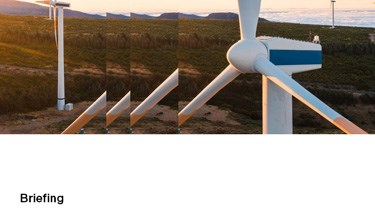Merger control: General Court annuls EC’s veto against Hutchison/Telefónica merger
Significant ramifications for merger control assessment expected
With a remarkable judgment of 28 May 2020 (Case T 399/16), the General Court of the European Union (“Court”) annulled the European Commission’s (“Commission”) prohibition of the contemplated acquisition of Telefónica Europe Plc (O2) by CK Hutchison (Commission case M.7612). The Commission’s prohibition of 2016 was based on two concerns relating to the retail market, and one concern relating to the wholesale market. It is the first time the Court has dealt with the application of the European Merger Control Regulation (“EUMR”) to non-coordinated effects of a concentration in oligopolistic markets. To the extent the findings become binding, they will strongly influence the merger assessment of the Commission.
Background
Oligopolistic markets are characterised by a small number of suppliers. A merger between two suppliers may not necessarily lead to the creation or strengthening of a dominant position, yet competition could still be substantially hampered where the merged entity is able to determine, by itself, the parameters of competition, such as price. Such non-coordinated effects were targeted by the merger reform of 2004, which introduced the substantive test of “significant impediment of effective competition” (SIEC). In the telecommunications industry, the application of the test had led the Commission to take a critical stance against four-to-three mergers in particular, i.e. transactions that reduce the number of operators from four to three.
Judgment
The judgment puts in order and clarifies important concepts of the substantive test and the standard of proof pursuant to the EUMR, and establishes an important requirement regarding merger-specific efficiencies.
The Court harshly criticises the inconsistent application of the legal SIEC test pursuant to Art. 2(3) EUMR, and the related concepts of “elimination of an important competitive constraint” (Recital 25 EUMR), “important competitive force” (para. 37 Commission Horizontal Merger Guidelines), and “close competitor” (para. 28 Commission Horizontal Merger Guidelines) which were applied to interpret the SIEC test.
- In order for the Commission to prohibit a transaction, it must involve (i) the elimination of important competitive constraints that the merging parties had exerted upon each other and (ii) a reduction of competitive pressure on the remaining competitors.
- Only the elimination of a particularly close competitor may cause concerns – referring to the rivalry between the merging parties and not to the rivalry between any competitors in an oligopolistic market. The fact that the merging parties may be relatively close in some market segments is not sufficient for a prohibition, as otherwise any four-to-three merger would have to be prohibited.
- The acquisition of any competitor in an oligopolistic market does not necessarily eliminate an important competitive force; the latter would have to stand out from its competitors in terms of its impact on competition. The Court notes that past business conduct is not necessarily indicative of the current or future role of a company.
The Court accepts that the Commission applies quantitative assessments, such as the upward pricing pressure (UPP) analysis, to simulate the incentives for the merging parties to increase prices. While the Court confirms that the Commission is not required to adopt a de minimis rule, or a safe-harbour threshold, it must demonstrate with a sufficient degree of probability that prices would rise significantly following the elimination of the important competitive constraints. Interestingly here, the Court requires the Commission to include in its analysis the standard efficiencies which the concentration could bring about.
The Court reminds the Commission to comply with strict standard-of-proof requirements. While the Commission is not required to adduce evidence that the scenarios and theories of harm would inevitably occur, it is required to produce sufficient evidence to demonstrate with a strong probability the existence of significant impediments. Hence, the standard of proof is stricter than that under which a significant impediment to effective competition is more likely than not based on a balance of probabilities, but less strict than a standard of proof based on being beyond all reasonable doubt.
Comment
The judgment is a major setback for the Commission’s approach to the assessment of non-coordinated effects, to the extent that it concerns effects not captured by the classic dominance test. The Court dismisses key elements of the Commission’s own interpretation (and expansive application) of the SIEC test. The Commission will now have to carefully reconsider fundamental notions of its merger assessment: When are merging parties particularly close competitors? When does a merging party stand out from the competition? How can standard efficiencies be assessed in price-increase simulations?
Beyond transactions in oligopolistic markets, the judgment sets a high standard of proof for the inherent prospective merger effects analysis. The Commission may find itself squeezed between the requirements set by the Court, demands for close scrutiny of “killer” acquisitions (acquisitions of start-up or nascent firms where there is significant uncertainty over the counterfactual) and political demands from Member States for a more dynamic and long-term approach to mergers. Will the judgment make consolidation easier? Probably not – it is more likely to mean that investigations into critical transactions become lengthier and more burdensome for the companies concerned. But first the Commission will have to decide whether or not to appeal the decision, which is likely in light of the central issues at stake.
Well
informed
Subscribe to our newsletter now to stay up to date on the latest developments.
Subscribe now








